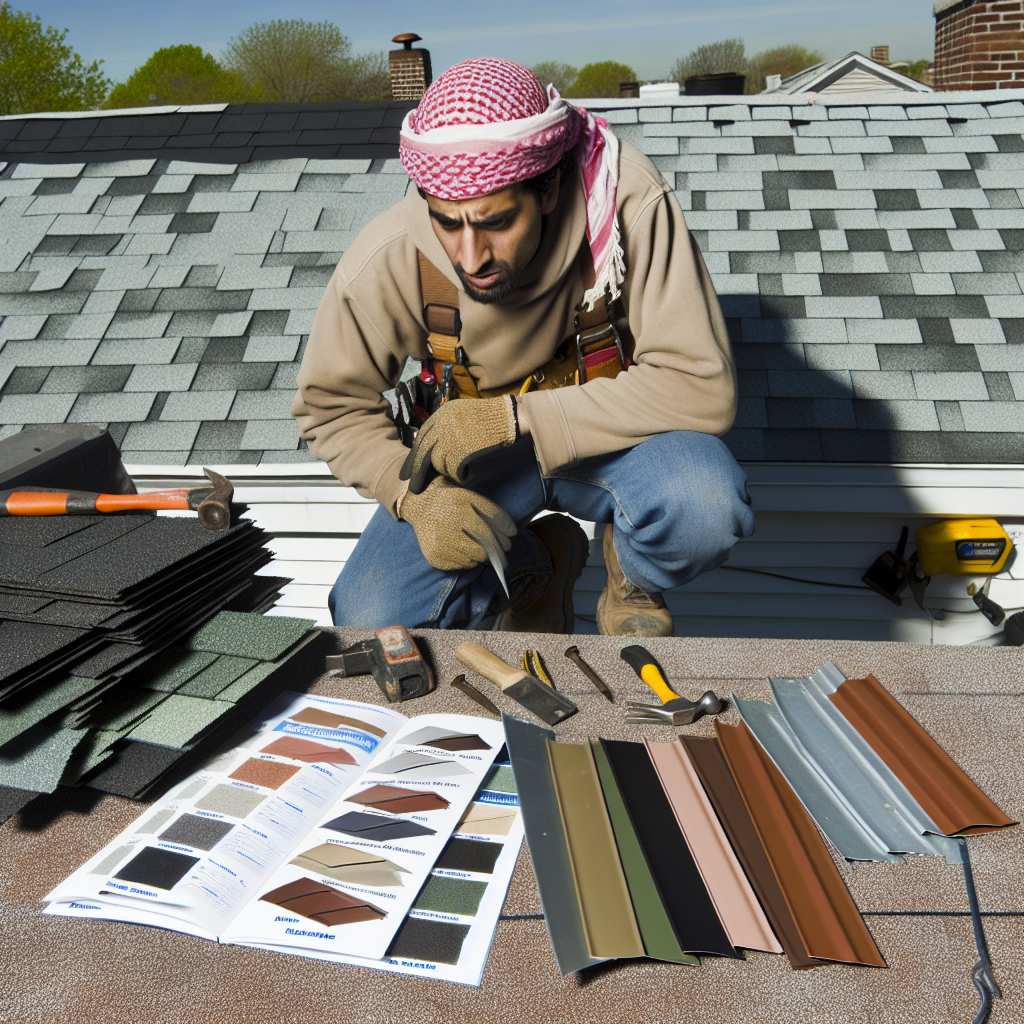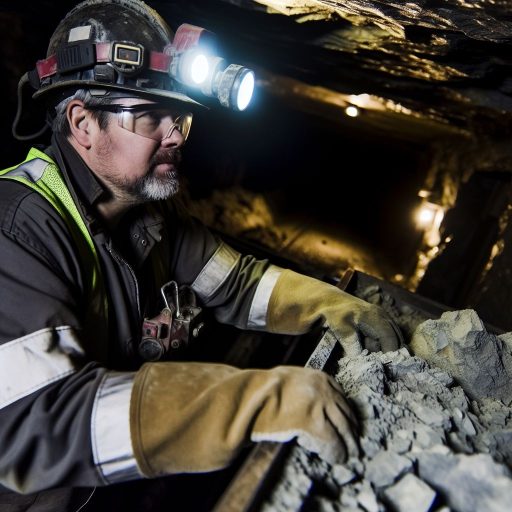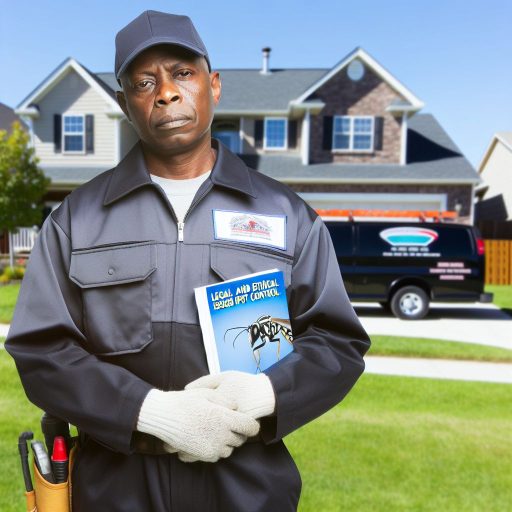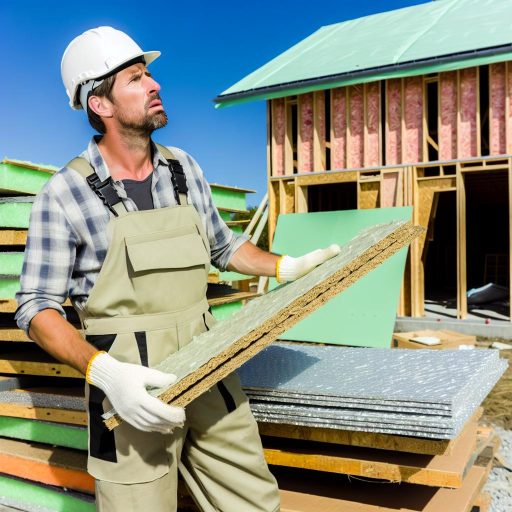Introduction:
Choosing the right roofing material is crucial for protecting your home from the elements.
With a variety of options available in the market, it’s important to understand the different types of materials to make an informed decision.
Asphalt Shingles:
Asphalt shingles are the most popular roofing material due to their affordability and ease of installation.
They come in a variety of colors and styles, making them versatile for any home design.
Metal Roofing:
Metal roofing is durable, long-lasting, and energy-efficient, making it a great option for homeowners looking for sustainability.
It can withstand extreme weather conditions and is also fire-resistant, providing added protection to your home.
Clay Tiles:
Clay tiles are known for their aesthetic appeal and durability, making them a popular choice for Mediterranean and Spanish-style homes.
They are resistant to harsh weather conditions and offer excellent insulation properties, reducing energy costs.
Wood Shingles:
Wood shingles provide a natural and rustic look to your home, adding charm and character to the overall design.
They are eco-friendly and can last for many years with proper maintenance, ultimately enhancing the value of your property.
Slate Roofing:
It is fire-resistant, low-maintenance, and can withstand extreme temperatures, ensuring a beautiful and durable roof for years to come.
Asphalt Shingles:
Asphalt shingles are one of the most popular roofing materials used in residential properties.
They are known for their durability and cost-effectiveness.
Asphalt shingles can last anywhere from 20 to 30 years, making them a long-lasting option.
These shingles are also easy to maintain, requiring minimal upkeep over their lifespan.
Asphalt shingles come in a variety of styles and colors to suit any aesthetic.
Architectural shingles offer a more upscale look compared to traditional 3-tab shingles.
With asphalt shingles, homeowners can achieve the look they desire without breaking the bank.
They are also relatively easy to install, which can help reduce labor costs.
Transform Your Career Today
Unlock a personalized career strategy that drives real results. Get tailored advice and a roadmap designed just for you.
Start NowMetal roofing is known for its durability and longevity.
Durability and Longevity:
Metal roofing can last for 50+ years, outperforming traditional roofing materials such as asphalt shingles.
Metal roofs are resistant to cracking, warping, and rotting, providing a solid and reliable barrier against the elements.
Energy Efficiency Benefits:
Metal roofs have excellent energy efficiency benefits, providing insulation that can reduce heating and cooling costs.
The reflective properties of metal roofing can also help to reduce temperatures inside the home during hot summers.
Types of Metal Roofing Materials:
- Steel: Steel roofing is strong and durable, offering a cost-effective option for homeowners.
- Aluminum: Aluminum roofing is lightweight, corrosion-resistant, and can last for decades with minimal maintenance.
- Copper: Copper roofing is known for its elegance and beauty, with a striking appearance that develops a natural patina over time.
Delve into the Subject: How to Find Sheet Metal Worker Jobs
Wood Shingles and Shakes
Wood shingles and shakes are popular roofing materials due to their natural beauty.
- Natural Beauty: Wood shingles and shakes have a unique, rustic appearance that adds charm to a home.
- Maintenance: Regular maintenance is required to prevent rot, mold, and insect infestation.
- Types of Wood: Cedar and redwood are commonly used for wood shingles and shakes.
Wood shingles are machine-cut with a smooth surface, while shakes are hand-split for a more textured look.
Both options offer excellent insulation properties, helping to regulate indoor temperatures and reduce energy costs.
However, wood shingles and shakes are susceptible to fire, requiring treatment with fire-retardant chemicals.
Additionally, these materials may warp, split, or decay over time if not properly maintained.
Regular inspections and repairs are necessary to ensure the longevity of a wood shingle or shake roof.
Despite the maintenance requirements, many homeowners choose wood shingles and shakes for their natural beauty and eco-friendly properties.
Gain More Insights: Tips for Starting Your Own Janitorial Business
Tile Roofing
Tile roofing is known for its elegant appearance.
It adds a touch of sophistication to any home.
Although tile roofing comes with a high upfront cost, it offers long-term benefits.
These benefits make it a worthwhile investment.
Types of Tiles
- Clay Tiles: Clay tiles are the traditional choice for tile roofing. They are known for their durability and classic look.
- Concrete Tiles: Concrete tiles are a more affordable option. They mimic the appearance of clay tiles.
Both clay and concrete tiles come in a variety of colors, shapes, and styles.
This allows homeowners to choose the perfect option for their aesthetic preferences.
Transform Your Career Today
Unlock a personalized career strategy that drives real results. Get tailored advice and a roadmap designed just for you.
Start NowClay tiles typically have a more natural and rustic appearance.
Concrete tiles offer a more modern and sleek look.
Benefits of Tile Roofing
One of the main advantages of tile roofing is its longevity.
When properly maintained, tile roofs can last for 50 years or more.
Tile roofing is also highly resistant to fire, rot, insects, and extreme weather conditions.
This makes it a durable option for homes in various climates.
Additionally, tile roofing is energy efficient.
It helps to keep homes cool in the summer and warm in the winter.
This can result in lower energy bills.
Tile roofing is also environmentally friendly.
It is made from natural materials and can be recycled at the end of its lifespan.
The upfront cost of tile roofing may be higher than other roofing materials.
However, the long-term benefits and aesthetic appeal make it a popular choice.
Homeowners looking for a durable and stylish roofing option often prefer tile roofing.
Learn More: Regulations Affecting Waste Management Workers

Highlighting the luxury and durability of slate roofing:
- Slate roofing is known for its elegant and sophisticated appearance, adding a touch of luxury to any home.
- The natural stone material gives a unique and timeless look that can enhance the overall aesthetic of a property.
- Its durability is unmatched, with a lifespan of up to 100 years or more when properly maintained.
Discussing the high cost and long lifespan of slate roofing:
- While the initial cost of slate roofing may be higher than other materials, it is a worthwhile investment in the long run.
- The long lifespan of slate roofing means that homeowners can enjoy decades of protection without needing frequent replacements.
- Its resistance to environmental factors like fire, mold, and mildew also contributes to its longevity.
Mentioning the environmental benefits of using natural slate:
- Natural slate is an eco-friendly roofing material that is sourced directly from the earth without the need for extensive processing.
- It is a sustainable option that can be recycled or repurposed at the end of its lifespan, reducing waste in landfills.
- Slate roofing also offers natural insulation properties, helping to regulate indoor temperatures and reduce energy consumption.
Slate roofing stands out for its luxurious appearance, durability, high cost, and long lifespan.
Transform Your Career Today
Unlock a personalized career strategy that drives real results. Get tailored advice and a roadmap designed just for you.
Start NowAdditionally, its environmental benefits make it a sustainable choice for homeowners looking to reduce their carbon footprint.
Find Out More: Best Moving Techniques for Fragile and Valuable Items
Rubber Roofing:
When it comes to rubber roofing, there are numerous benefits that make it a popular choice among homeowners.
Durability: Rubber roofing is known for its long-lasting durability, able to withstand harsh weather conditions.
Flexibility: This material is flexible, making it easy to install on different roof shapes and sizes.
Eco-friendly: Rubber roofing is considered environmentally friendly as it can be recycled after use.
There are two main types of rubber roofing materials that are commonly used:
- EPDM (Ethylene Propylene Diene Monomer) Rubber: EPDM is a synthetic rubber material that is highly durable and resistant to UV rays.
- TPO (Thermoplastic Olefin) Roofing: TPO is a newer type of rubber roofing that offers excellent resistance to mold, punctures, and tears.
Overall, rubber roofing is a great option for those looking for a durable, flexible, and eco-friendly material for their roofs.
Choosing the Right Roofing Material
We have discussed various types of roofing materials commonly used in construction.
Each material has its own unique characteristics and benefits.
Homeowners must consider factors such as durability, cost, and aesthetics when making choices.
By understanding the different types of roofing materials available, homeowners can make informed decisions.
Whether it’s classic asphalt shingles, eco-friendly metal roofs, or stylish clay tiles, options abound.
There is a roofing material for every style and budget.
Consulting with professionals can help determine the best type of roofing material for your home.
Investing in high-quality roofing material can increase the value of your home.
It also provides essential protection from the elements.
Consider all factors carefully when selecting a roofing material.
Choose a material that enhances the appearance of your home and stands the test of time.
Choose wisely and enjoy a sturdy, durable roof for years to come!
Transform Your Career Today
Unlock a personalized career strategy that drives real results. Get tailored advice and a roadmap designed just for you.
Start Now



